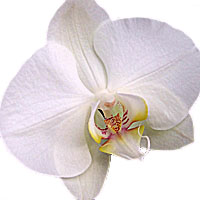
- Some important rules.
- Beginner Tai Chi and Qigong.
- Simple Qigong: How to Learn Qigong.
- Online tutorial covering the most important rules that one should follow, when practicing Tai Chi and Chi Gun.
Keep your back straight.
Sometimes you will have to bend forward, either because you are not flexible enough, or because the exercise requires so, but even then, do not move up your coccyx. Always have it turned forward, just a little. As the other part of this restriction, the shoulders should not go down. If you bend forward, do it with flat back, keeping your coccyx forward (which means, your low back will be stretched).
The reason for this rule have a lot to do with the idea, that energy channels on your back should be straight. Bringing your coccyx back will create an extra curve in your low back, and the energy flow will stop (or will never start).
Relax your shoulders
Keep your shoulders relaxed and down. Always, except when explicitly told otherwise. The attention should be always paid to the dzjan dzi points, they should not go up.
As explained at this web site, the result of this rule is the "30 degrees" rule. Your hands should not be in the same plane with your back. Instead, they should go only as far as 30 degreed to this plane (except when explicitly told otherwise). If we bring our hands in the same plane with our back (down, up, or to the sides, does not matter), our shoulders automatically go up, which is wrong.
Knee above the foot
This rule applies when your weight is on the foot. The knee should be on top of your foot, and not to the side (especially, not inside). Tai Chi is known for healing the knee problems, but if you do not follow this rule, you may as well create ones.
Do not look down
There is nothing there to look at. Look forward, at the direction of the exercise.
Coordinations
1. Hip and foot.
Your "empty" foot (one that have no or almost no weight on it) should always point in the same direction where hips face.
2. Elbow - knee.
The way we move our elbows is coordinated with our knees.
3. Palm and foot.
The palm and foot are moving in synch.
Coordinations will be explained in details when we describe corresponding exercises.
Empty foot moves
In some Qigong forms we do have situations, when you move the "loaded" foot, one that has weight on it. In "24 forms" we do not have it, except for the first and the last forms, that are "transitional" entry and exit forms. In all other forms, you need to move the weight off the foot before you can move it.
There should be no "double weight"
A direct result of the previous rule. If we move the foot (which means it is not on the ground at the moment) it should be empty. No double weight.
Keep the center of gravity steady
When walking, do not jump up and down.
Long hands, straight wrists
In Tai Chi you will find, that elbows are generally less bent, than you would expect, if you had some prior martial arts experience. Thet is due to the fact, that the "energy" is moving better through the (almost) straight hands.
Due to the same reason, you will almost newer bend the wrists, except for the very little angles up or down, or sideways. However, when you push, your lao goon points go forward, which is done by combining the angle at the elbow and wrist.
There are no stops
In some Tai Chi styles there are stops, but even there the chi keeps moving. In Tai Chi 24 Chen style there are no stops. The motions are smoothly flowing into each other.
Elbows down
Elbows should always be "hanging" down. From the martial point of view, the "elbow to the side" is an invitation for an opponent to either kick you in the armpit, or to break your shoulder.
From the "energy" point of view, the "elbow to the side" means, that your shoulders are tense.
Palms and wrists
Normally, when you are not required to close fist, or do something like that, your wrists should be straight. Sometimes, when the exercise says something like "push your opponent with your palm", even then the wrist should only SLIGHTLY bend, exposing the lao goon point. The more you bend your wrist, the less energy flow in the hands you have.
The fingers should be straight, as opposed to bent, they should not be wide apart, but they should not be touching each other, either.
The thumb should form "two arches". One is between the thumb and the pointing finger, and the other - between the thumb and the baby finger.

Continue to Tai Chi Martial Art and Qigong meditation Home page.
Yang family Tai Chi, Qigong exercises, Qigong meditation, Taiji Qigong, Tai Chi Martial Art, Tai Chi Meditation, Tai Chi 108 form, Tai Chi 40 form, Tai Chi 24 form